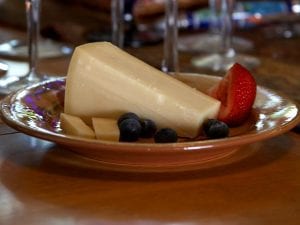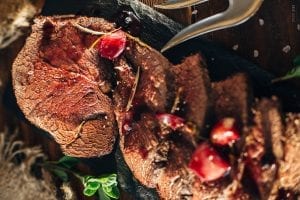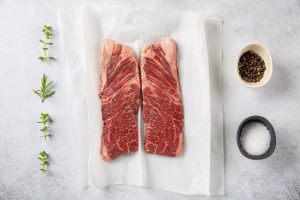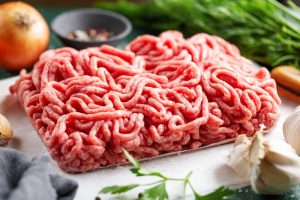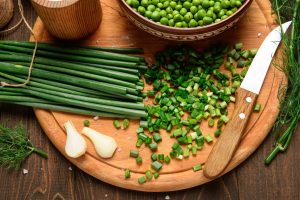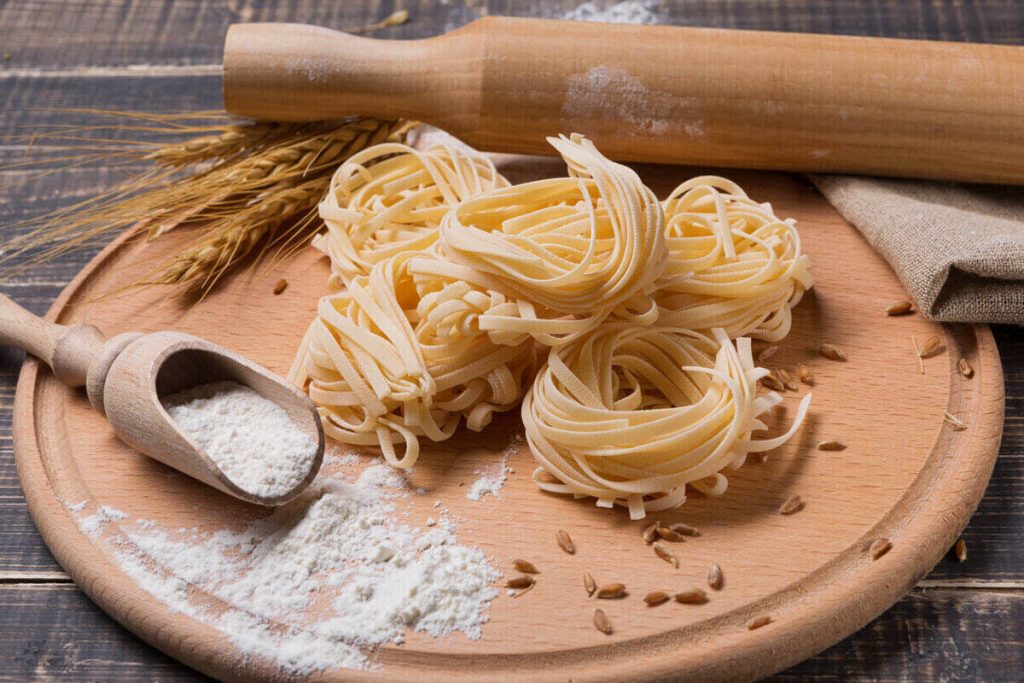
Noodles and pasta are popular all around the world. Italy alone is home to more than 400 types of pasta, so breaking down and differentiating how each one differs from the others is quite the challenge. One of the most confused and pitted against are linguine vs fettuccine. Both are from Italy and are often interchanged in pasta dishes.
Knowing the different pasta shapes and names may seem trivial to some, but it’s actually important to know which is which, as different pasta types pair well with specific sauces. With that, we have curated a list of their differences as well as how to use them in varying dishes!
What Is the Difference Between Linguine and Fettuccine?
| Characteristics | Linguine | Fettuccine |
| Origin | Genoa, Italy | Rome or Tuscany, Italy |
| Appearance | Long and elliptical with narrower strands | Long with flatter and wider strands |
| Ingredients | Flour and water | Eggs and flour |
| Serving Style | Best served with thin sauces like passata with seafood sides | Best served with thick sauces like alfredo and meat |
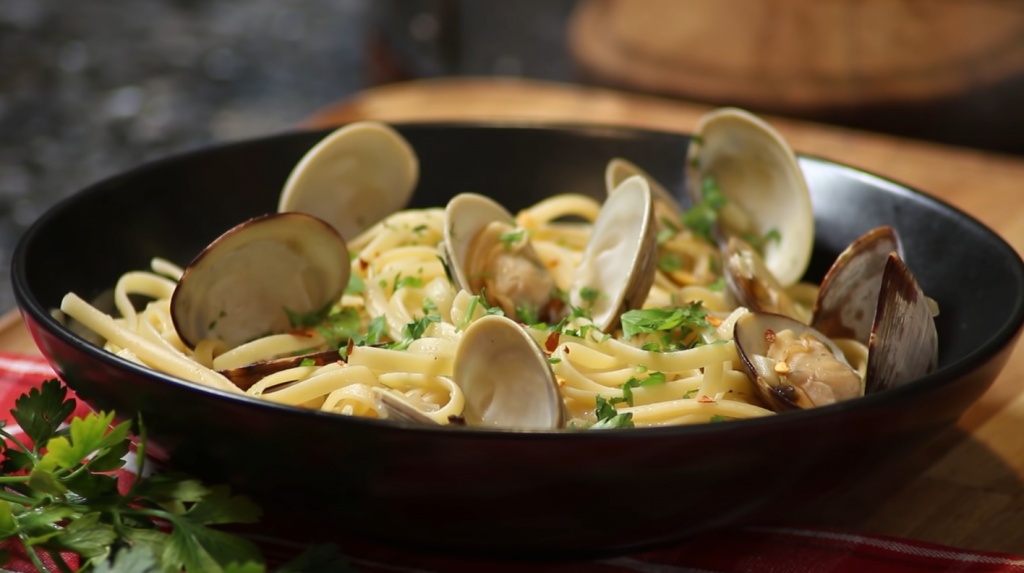
Linguine pasta with clams
Linguine is a type of pasta from the province of Genoa in Italy. The name linguine means “little tongues” in Italian because this pasta looks long and slightly flat. If you’ve noticed, its appearance is quite similar to fettuccine which is why both are often confused with each other. Besides its famous relative, it’s also similar to linguettine (a thinner version of linguine).
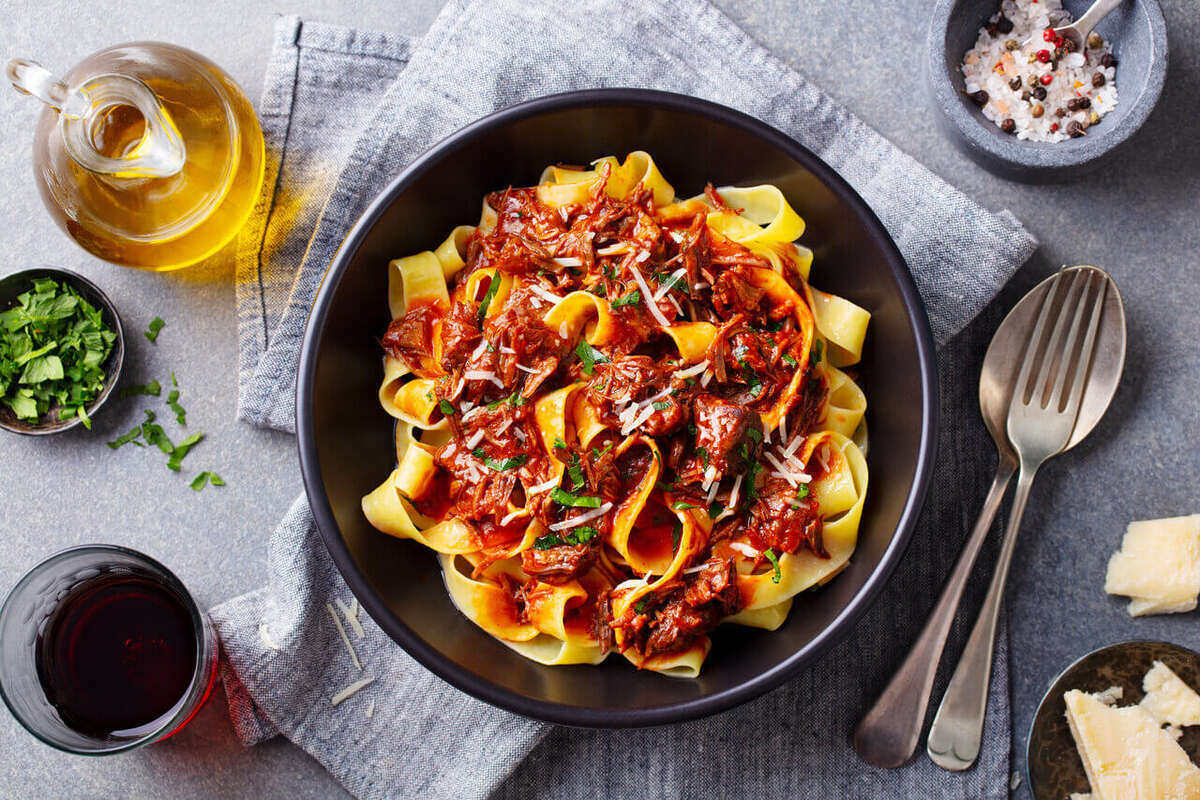
Fettuccine pasta with beef ragout sauce
Let’s talk about fettuccine. Fettuccine’s origin is much harder to pinpoint than linguine. But most would say it originated either in Roman or Tuscan cuisine. Just like linguine, this pasta is named after its appearance. In Italy, the name means “little ribbons” because of their flat and wide ribbon-like shape.
At first glance, we admit they look quite similar. But trust us, they’re very different! We’ll help you explore their differences below by breaking down their characteristics and how each one is best used in authentic Italian recipes.
Fettuccine is Wider Than Linguine
One of the signs you have to look for to set them apart is their appearance. What do they look like? Which one is wider and flatter? The secret is to look closely.
You’ll notice that linguine is much narrower and has a slightly elliptical or rounder shape than fettuccine. But compared to other pasta such as angel hair, spaghetti, and bucatini, linguine noodles are flatter.
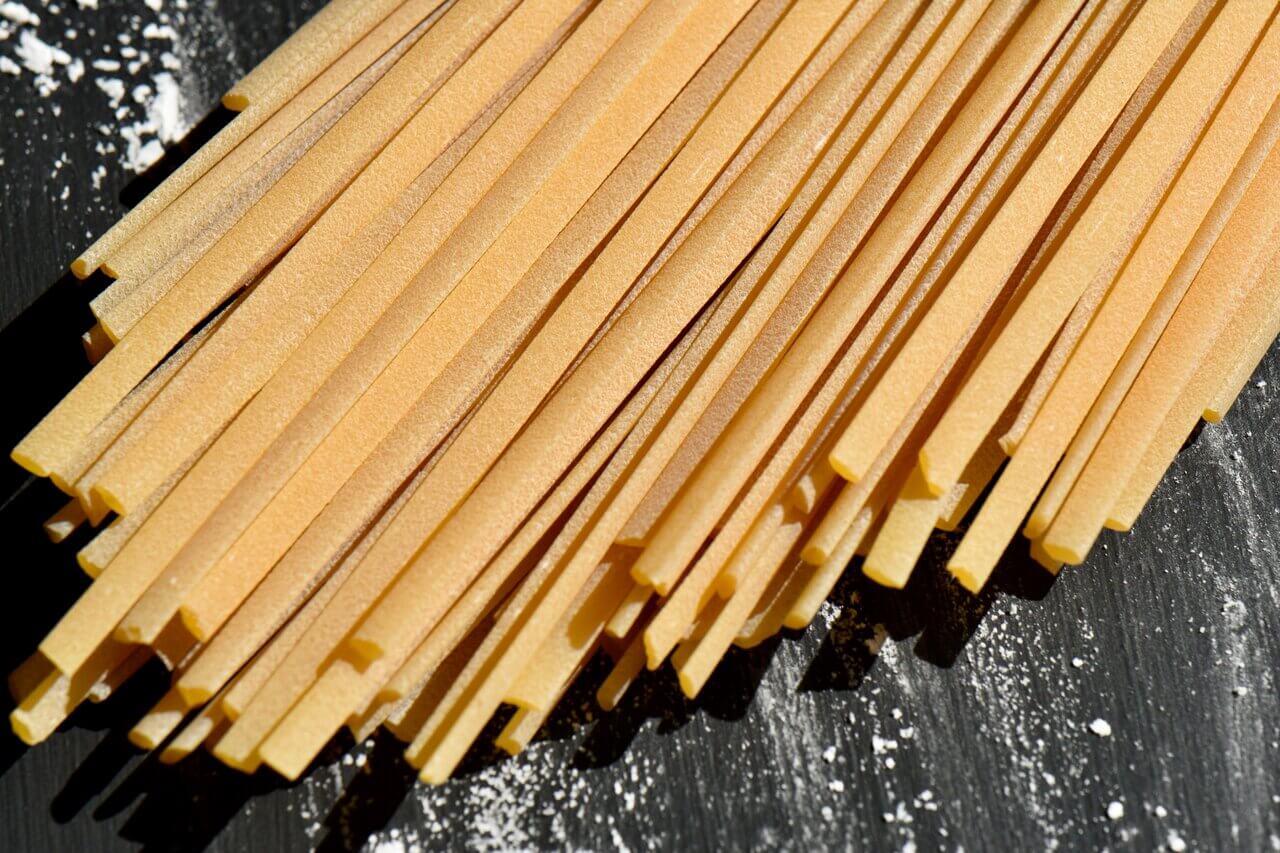
Linguine Pasta
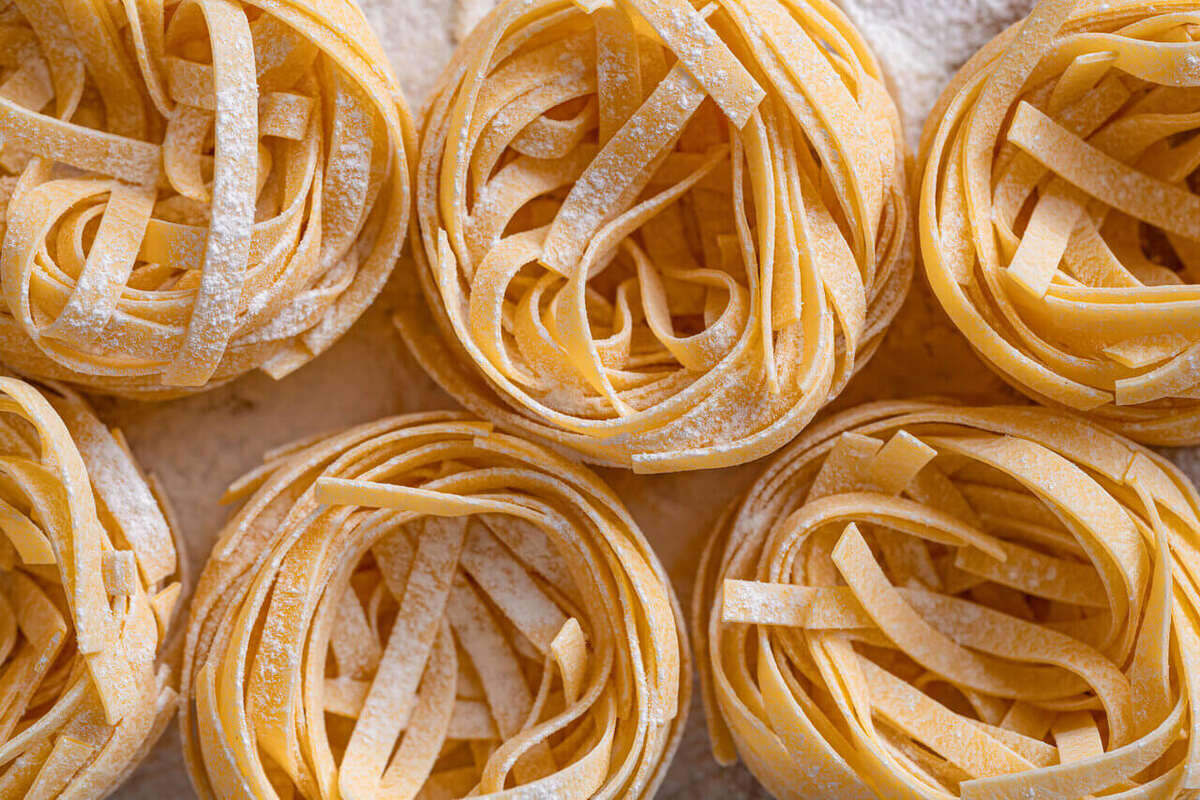
Fettuccine Pasta
On the other hand, fettuccine is wider and has a flatter appearance than linguine. That is also why it’s more hearty and filling than linguine’s lighter bite.
They’re Made With Different Ingredients
How do linguine vs fettuccine compare when it comes to their ingredients? These types of Italian pasta look like they’re made with the same ingredients only made into different shapes. Well, this is not true.
Linguine noodles are made with only a simple flour and water mixture. Of course, other variations exist! Instead of flour, you can also use white flour, whole wheat, almond, and even potato flour. Fettuccine noodles, on the other hand, are made with flour and eggs.
Because linguine is only made with two simple ingredients, it is easier to knead at home compared to fettuccine as the latter is a lot denser. Because it is denser, it is harder to knead if you’re not an expert.
Linguine and Fettuccine Pair With Different Sauces

Straightaway, you’ll notice that fettuccine is quite hefty compared to linguine’s lighter bite due to its ingredients and shape. Because of this, they are paired with different sauces.
Since linguine is narrower and made of less dense ingredients, it is softer and more delicate. Given this, linguine pairs best with light and thin tomato sauces like passata, pesto, white wine and garlic, and seafood-based sauces.
Since we’re talking about Italian cuisine, it’s important to note that their food is distinct to every region as they vary in resources. Linguine is mostly paired with seafood and pesto sauces not only because they’re light but also because they all come from Genoa.
Did You Know?
Genoa, the home of linguine and pesto, is located beside the Ligurian sea. The area is abundant with seafood, especially shrimp. Now, that explains all the shrimp and linguine dishes!
On the contrary, fettuccine has a wider surface area and uses denser ingredients like eggs. This is why fettuccine is better paired with thick and heavy sauces like bolognese, carbonara, and ragu. It’s also often associated with white wine and garlic fettuccine alfredo sauce which is hefty and creamy.
Can You Substitute Linguine for Fettuccine?
It’s true, these kinds of pasta are best paired with different sauces. However, that doesn’t stop them from being versatile ingredients. Now, can you use linguine instead of fettuccine, and vice versa? Yes, of course! Even if they use different ingredients that have varying heftiness, linguine has a similar texture and mouthfeel to fettuccine.
If you run out, you can substitute linguine with an equal amount of fettuccine. Still, remember that it cooks faster than linguine because it’s flatter. Generally, fettuccine cooks in about 10 to 11 minutes. That’s two minutes faster than linguine which is about 13 minutes. And of course, cooking time also varies if you’re using the fresh or dried sort.
The bottom line is that linguine and fettuccine can comfortably replace each other in recipes. This fettuccine carbonara, for example, can be substituted with linguine. The same goes for this clam chowder seafood pasta dish!
Tagliatelle vs Fettuccine vs Linguine

Tagliatelle Pasta
The confusion between tagliatelle, fettuccine, and linguine is because of their ribbon-like shape. However, they have different origins and ingredients. And if you look a little closer, they also differ in appearance or width.
Now, remember that tagliatelle has more in common with fettuccine as they are both made with flour and eggs. That is why both varieties complement thick, heavy, and meaty sauces. They also have a wide shape. The only difference is that tagliatelle is thinner and slightly wider than fettuccine.
How To Make Linguine
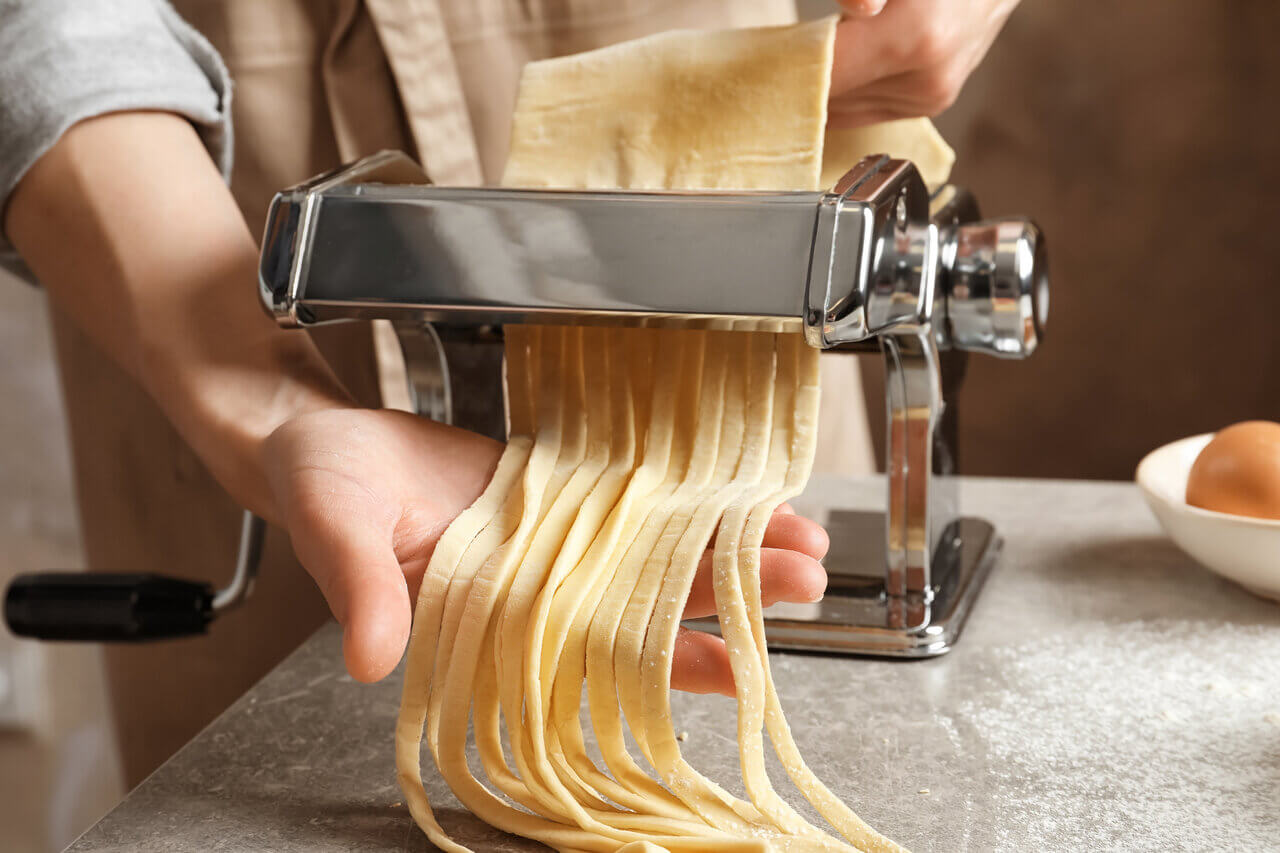
If you’re not Italian, making homemade fresh pasta is a little tricky because you may not be hardwired to make pasta regularly. As you’d expect, linguine is not easily made at home because it has an oval shape. It’s easy combining flour and water, but it’s another thing if you want to be accurate and you want to get the perfect width and thickness while keeping that elliptical, oval shape.
You can make pasta with one of the handiest tools you already own: your hands! Roll out the dough and cut it into 3 to 4 millimeters. If you want to speed things up, employ the help of a pasta maker. It gets even flat noodles. And in no time too! Although, if you ask us, there’s nothing wrong with store-bought. Maybe get something from a good, top-notch brand to compensate.
How To Make Fettuccine
Fettuccine are flatter than linguine. Although you might not realize it at first, its uncomplicated flat shape is easier to replicate at home than linguine’s rounded edges. All you have to do is combine flour and eggs. Rest it for a bit and roll it out until it forms a flat sheet. And then cut into 6 millimeters wide. It’s so easy to make. In fact, kids can even join in on the fun. Think of it like their first step to pasta making!
Of course, as you would for linguine, there’s nothing wrong if you want to employ the help of a pasta maker to make fettuccine. In fact, we recommend it if you’re on a tight schedule.
Linguine and Fettuccine Recipes to Try
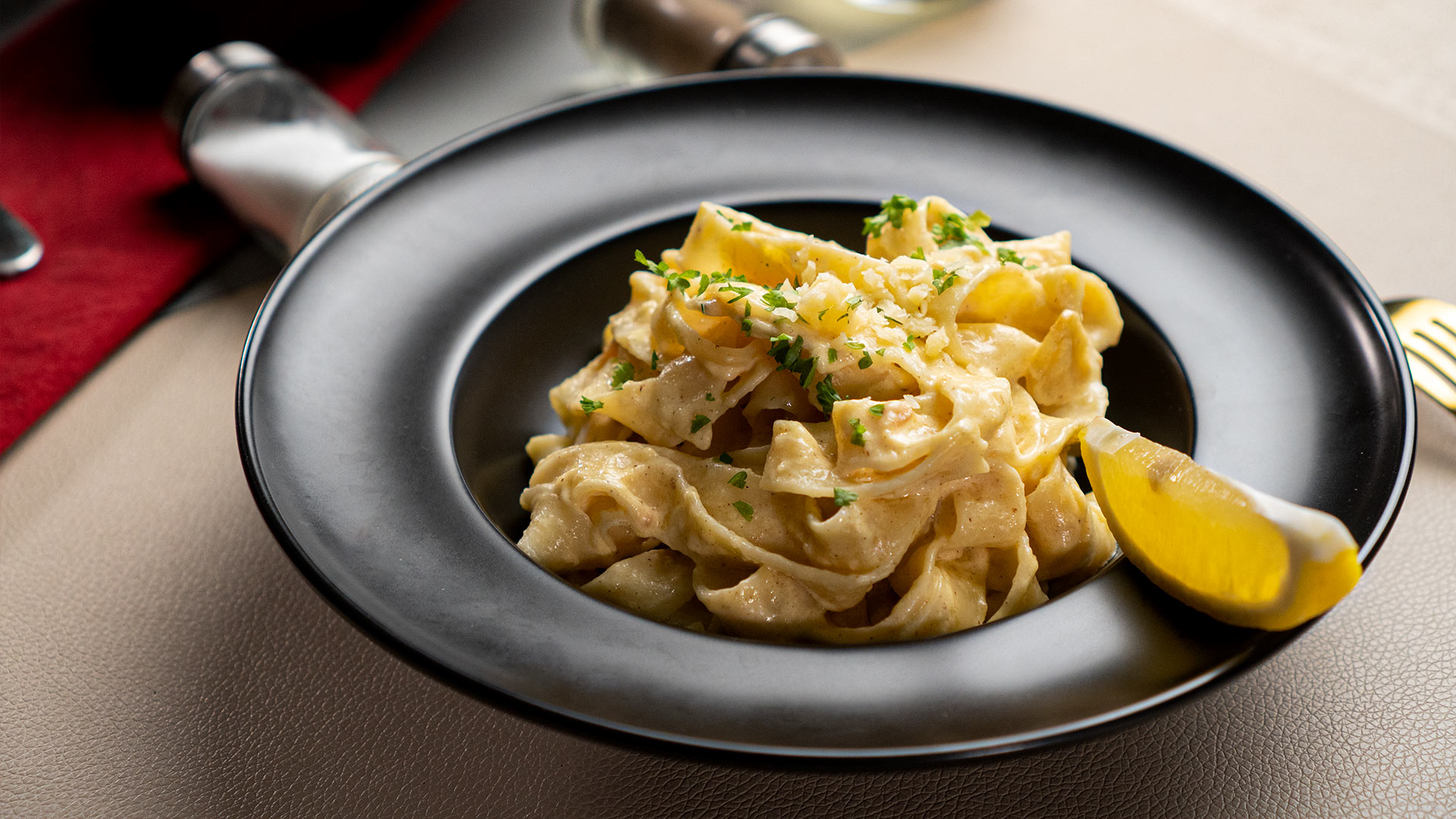
Linguine and fettuccine are types of ribbon pasta that pair nicely with a wide variety of sauces thick, heavy, or thin alike! They’re extremely versatile which is why they’re the perfect base to feature almost any sauces.
Find out below how you can use these well-known noodles to create delicious meals:
- Linguini Aglio Olio – Linguine is the perfect base to highlight the flavor of aglio olio! In particular, it combines light ingredients such as extra virgin olive oil, green olives, basil, lemon juice, and white wine for a light, pasta dish!
- Trenette Al Pesto (Luca Pasta) – This simple recipe from Disney Pixar’s animated film, Luca, involves yellow potatoes and green beans tossed in pesto sauce. The original recipe uses trenette pasta but you can also opt to use linguine here instead as both look quite similar!
- Carrabba’s Copycat Fettuccine Alfredo – Alfredo sauce is the type of sauce that can easily overwhelm you if you don’t pair it with the right pasta. Team it up with thick fettuccine noodles just like Carrraba’s did! It starts with butter, heavy cream, and Parmesan for a delicious, yet easy meal.
- Lemon Garlic Cream Fettuccine – Tired of alfredo sauce? Switch it with another creamy sauce and add a delightful, slightly tangy twist with lemon juice, cream cheese, herbs, and spices. This easy recipe serves six people and in under 30 minutes too!
Linguine vs Fettuccine: Which Is Better?
Linguine and fettuccine are undeniably two of the most versatile kinds of pasta that you can use interchangeably (and comfortably) at home. As home cooks, we have a little more leeway on how we can use them. But which one is better? Italian chefs would say, each has its own place and that it depends on the sauce or dish.
As mentioned, Linguine’s delicate bite calls for lighter and thinner sauces that won’t overpower each other. Meanwhile, fettuccine’s thick strands beckon thick sauces where both complement each other seamlessly.
Ultimately, the best one between fettuccine vs linguine is up to you and the dish. However, there’s nothing wrong with substituting them especially when you’re cooking at home. Just don’t let the Italians know!
Was this page helpful?
Read Next: How Many Chicken Wings Are in a Pound?
